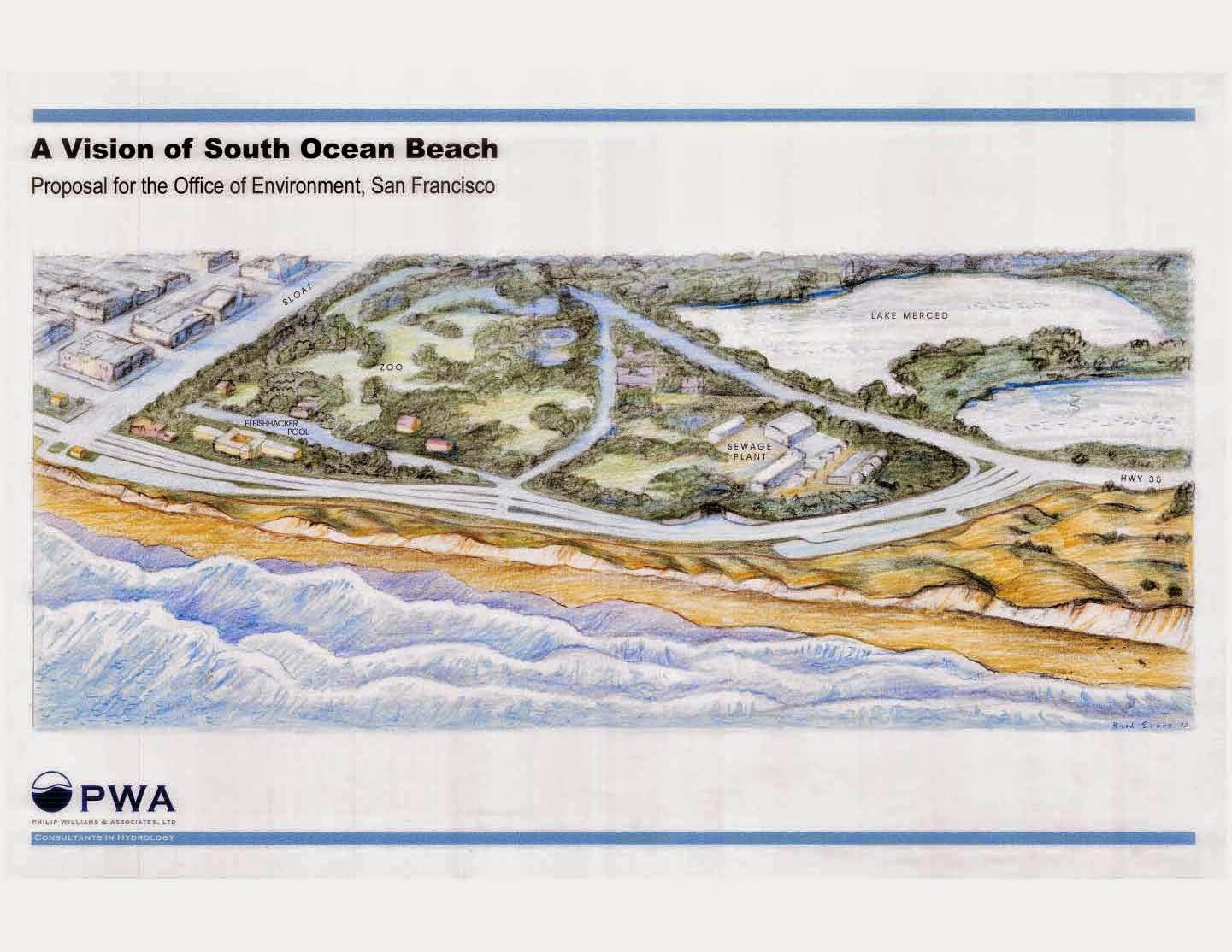 |
The south or 2nd Sloat parking lot is now closed due to erosion. Thankfully SPUR, SFMTA, and others are working on a temporary parking solution. Photo: B. McLaughlin
|
Last month, we went over the cost / benefit argument for re-locating the Lake Merced Tunnel (LMT). Now we would like to cover the issue of sea level rise and climate change driven storm activity and how it informs our position on the LMT.
As you may know, estimates of future sea level rise and climate change effects are inexact, and are frequently changing. Climate deniers seize on the instability of forecasting studies to dismiss man-made climate change and sea level rise altogether. Meanwhile, those that accept the views of the scientific community understand that the models, while not uniform in their predictions, are consistent in one respect: they are trending higher. We need to prepare for even greater sea level rise and storm activity than previously thought.
This is significant.
Currently the Ocean Beach Master Plan document follows California state guidelines for sea level rise planning: 14" of sea level rise by 2150 and 55" by 2100. The problem with these numbers is that they were set in 2010. Since that year, several reports by leading climate scientists indicate that sea level is accelerating much faster than previous estimates. One high profile study recently published by former NASA scientist James Hansen, predicts that if we don't curb our carbon emissions we could be faced with 10 meters of sea level rise by 2100. That's 393.7 inches! The reasoning lies in the melting of the polar ice sheets. They are melting a much greater rate than was previously known. Here is a link to a recent article published in the Washington Post that explains the issue. While estimates do vary, the common them is that coastal planners should be prepared for much higher sea levels than recent predictions. This means that Ocean Beach Master Plan's 2010 forecast data is all but certainly outdated and inadequate.
Surfrider believes the effects of climate change are a major reason why the City should seriously consider relocating the Lake Merced Tunnel. Preparing for the lower end of the forecast models is not smart given what is at stake. Greater climate change means stronger wave energy and erosion will visit our shorelines. If we move infrastructure away from the coast, we can remove it from the threat of storm damage while ensuring the preservation of our beaches.
The bottom line: It would be a tragedy to put all this money and time into a project at Sloat, only to watch it fail because the latest science was not factored into the design.
